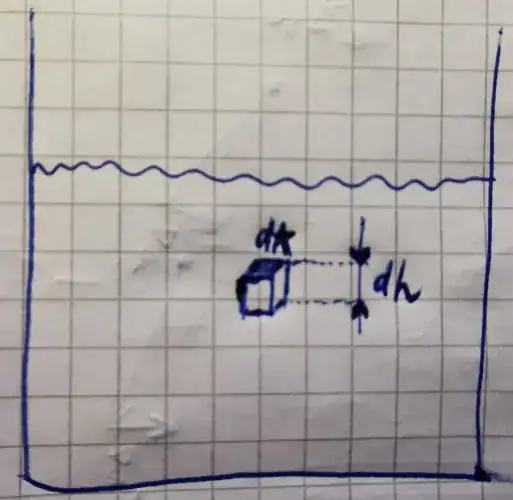How can buoyant force be derived from most basic laws of fluids ?
I can think of easy one. Consider such scheme of body floating deep in water :
Where $dA$ is elementary downward directed surface unit of a body, $dh$ - elementary change of depth.
Then infinitesimal pressure change by definition is : $$ dp = \rho g\, dh $$
Pressure is force per unit area, substituting this into formula gives, $$ \frac {dF}{dA} = \rho g\, dh $$
Moving elementary surface into right side of equation gives,
$$ dF = \rho g\, dA\, dh $$
Further we notice that $dA \cdot dh$ is nothing but elementary volume, so we can rewrite equation as :
$$ dF = \rho g \,dV $$
Now we need to integrate both sides of equation,
$$ \int dF = \int \rho g \,dV$$
Which further integrating elementary volume against floating in water body part $V_f$, gives :
$$ F = \rho g \int^{V_f}_0 dV = \rho g V_f $$
which is exactly buoyant force.
Any other buoyant force derivations from basic principles ?
